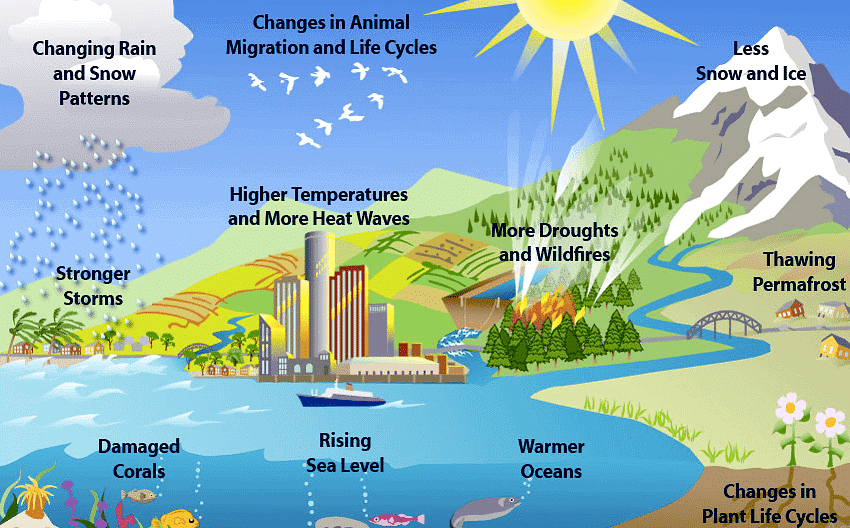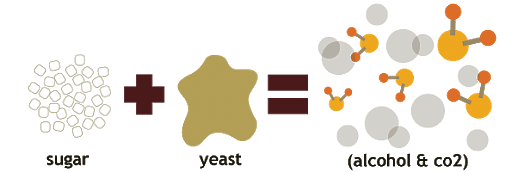Class 8 Science: Sample Question Paper - 1 | Science Class 8 PDF Download
Q.1. Cheek cells do not have______.
(a) Cell membrane
(b) Golgi apparatus
(c) Nucleus
(d) Plastids
Ans. (d)
Solution: Cheek cells are the epithelial cells (animal cells) and thus have a cell membrane, nucleus, mitochondria and Golgi apparatus but do not plastids. Plastids are the organelle in plant cells.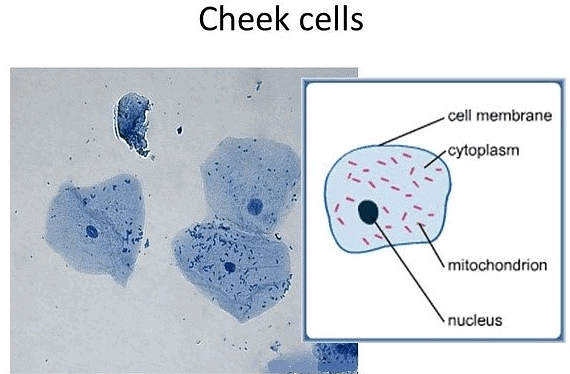
Q.2. Which of the following secondary sexual character is not present in male?
(a) Growth of facial hair.
(b) Hair grows under the arms.
(c) Hair grows in the region above thighs.
(d) Development of breasts.
Ans. (d)
Solution: Development of breasts is a secondary sexual change that appears in females.
Q.3. 1 hertz is equal to______.
(a) 1 vibration per minute.
(b) 10 vibrations per minute.
(c) 60 vibrations per minute.
(d) 600 vibrations per minute.
Ans: (c)
Solution: One hertz is equal to one cycle per second and therefore 1 hertz is equal to 60 vibrations per minute.
Q.4. The earth's plate responsible for causing earthquakes is:
(a) The crust of the earth
(b) The mantle of the earth
(c) The inner core of the earth
(d) The outer core of the earth
Ans. (a)
Solution: The earth's plate responsible for causing earthquakes is the crust of the earth.
Most earthquakes occur along the edge of the oceanic and continental plates. The earth's crust (the outer layer of the planet) is made up of several pieces, called plates. Earthquakes usually occur where two plates are running into each other or sliding past each other.
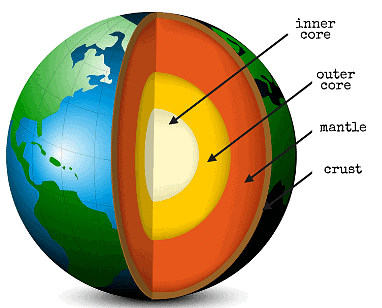
Q.5. The outer planet is:
(a) Mercury
(b) Venus
(c) Earth
(d) Jupiter
Ans. (d)
Q.6. The substance that does not burn with flame is:
(a) LPG
(b) Camphor
(c) Dry gas
(d) Charcoal
Ans: (d)
Solution: Charcoal, does not vaporize and so, does not produce a flame. The substances which evaporates during burning, give flames.
Q.7. Pitch of sound is determined by its______.
(a) Frequency
(b) Amplitude
(c) Speed
(d) Loudness
Ans. (a)
Solution: The number of vibrations per second or frequency determines the pitch of a sound.
Q.8. The number of nuclei present in zygote is:
(a) One
(b) Two
(c) Four
(d) None
Ans. (a)
Solution: A zygote contains a single nucleus. A zygote is formed by the fusion of the sperm and ovum cells by the fertilization process and a single uni-nucleus is formed in the zygote.
Q.9. Green colour of leaves is due to the presence of the pigment:
(a) Chlorophyll
(b) Mitochondria
(c) Ribosomes
(d) Chloroplast
Ans. (a)
Solution: The green color of leaves is due to the presence of the pigment Chlorophyll. Chlorophyll is important in photosynthesis, allowing plants to absorb energy from light.
Q.10. Coal tar contains about _____ substances.
(a) 400
(b) 300
(c) 100
(d) 200
Ans. (d)
Solution: The coal tars are generally variable and complex mixtures of poly cyclic aromatic hydrocarbons, phenol as well as hetero cyclic compounds. Totally, there are roughly about 200 substances present in coal tar.
Q.11. Name the hormone which controls metamorphosis in frog.
Ans. Thyroxine hormone, which is produced by thyroid controls the metamorphosis in frogs.
Q.12. While sieving grains, small pieces fall down which force pulls them down. Why?
Ans. It is the force of gravity which is responsible for the grains to fall down.
Q.13. Fishes move easily in water. How?
Ans. Fishes are having streamlined shape, so they can move easily in the water.
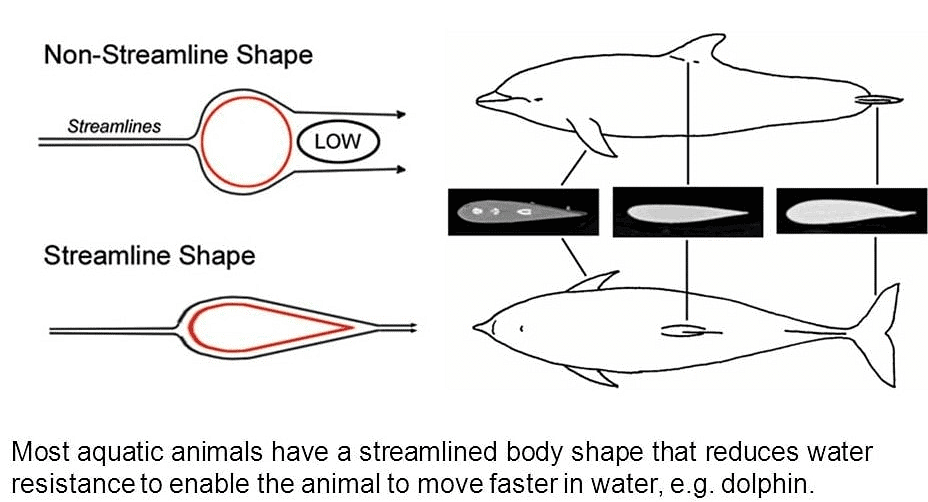 Streamlined Shape
Streamlined Shape
Q.14. Define 1 Hertz.
Ans. 1 Hz is one oscillation per second.
Q.15. Plastic straws A and B are rubbed with dry cotton cloth. What will happen if they are brought near each other?
Ans. The straws will acquire the similar charge and hence they will repel each other.
Q.16. Why does banana appear yellow?
Ans. The banana appears yellow because it reflects red and green light but absorbs blue light.
Q.17. A bucket made up of plastic does not rust like a bucket made up of iron. Why?
Ans. Plastic is non-reactive material. When left exposed to moisture and air, it does not react with air and water which are essential for corrosion, therefore does not rust.
Q.18. In what form is magnesium found in plants?
Ans. Magnesium is found in plants in the form of ionic salts in chlorophyll. Due to its deficiency, plants are unable to produce enough chlorophyll and as a result, leaves develop yellowish colour.
Q.19. Look at the following figure where petroleum and natural gas deposits are shown. Why do we find oil layer above water layer?
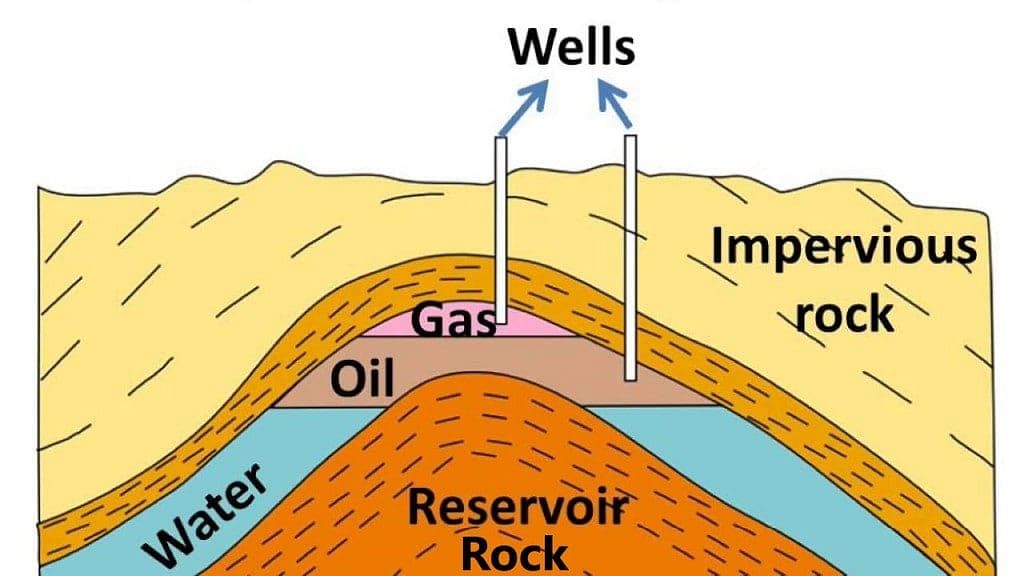 Ans. Oil is lighter than water, hence it will float over water.
Ans. Oil is lighter than water, hence it will float over water.
Q.20. The calorific values of petrol and CNG are 45000 kj/kg, and 50000 kj/kg respectively. If you have vehicle which can run on petrol as well as CNG, which fuel will you prefer and why?
Ans. We will prefer CNG (Compressed Natural Gas) because the calorific value of CNG is higher than that of petrol. Therefore, CNG will be more economical. CNG will produce larger amount of heat energy than petrol. At the same time, it produces the least air pollutants.
Q.21. Write any two consequences of Deforestation.
Ans.
Consequences of deforestation are:
(i) Deforestation increases the temperature and pollution level on the earth. It increases the level of carbon dioxide in the atmosphere.
(ii) It also disturbs the balance in nature and increases chances of natural calamities such as floods and droughts.
Q.22. Draw a labelled diagram of human ovum.
Ans.
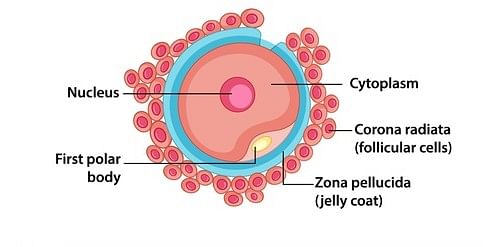 Human Ovum
Human Ovum
Q.23. Name the hormone which would be released during the following situations:
(i) a frightened person.
(ii) growth of a child to adult.
(iii) development of caterpillar to moth.
(iv) development of tadpole to frog.
Ans.
(i) Adrenaline is secreted from adrenal gland during the stress conditions.
(ii) Growth hormone is secreted from pituitary gland to regulate the normal growth of a person.
(iii) Insect hormones control the development of caterpillar to moth.
(iv) Thyroxine is produced by thyroid gland to control the development of tadpole to frog.
Q.24. In the circuit shown in Fig. when the key is closed, the compass needle placed in the matchbox deflects. Name the force which causes this deflection.
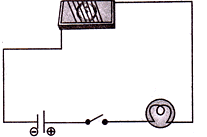
Ans. On closing the switch, the current starts flowing in the wire and due to this current, a magnetic field gets established around the wire which exerts magnetic force on the needle and it gets deflected.
Q.25. Name two methods of reducing friction with examples.
Ans.
- Rolling: The rolling wheels attached to luggage bags make it comfortable for passengers to carry them because rolling reduces friction and is smaller than sliding friction.
- Sliding: By polishing surfaces or by applying a lubricant.
Q.26. Write the difference between Regular and Irregular reflection.
Ans. Difference between Regular and Irregular reflection:
Q.27. What is Natural gas? What are the advantages of using CNG?
Ans. Natural gas is a very important fossil fuel. It is stored under high pressure as compressed natural gas (CNG).
Advantages of CNG:
- It is easy to transport.
- It does not produce any pollution.
- No residue is left after burning of CNG.
- It burns completely in the air.
Q.28. Give two examples each for a solid, liquid and gaseous fuel along with some important uses.
Ans.
- Solid Fuels: Examples are wood and coal. These are used to cook food in homes. Coal is also used in industries.
- Liquid Fuels: Examples are kerosene and petrol. Kerosene is used in stoves and in lamps to cook food and petrol is used as a fuel in automobiles.
- Gaseous Fuels: Examples are natural gas and petroleum gas. These are used in industries. CNG is used to run automobiles.
Q.29. Why are endemic organisms in greater danger of becoming extinct?
Ans. Endemic organisms are confined to a limited geographical area. They cannot adapt or live outside their natural habitat; any disturbance to their habitat will adversely affect them. Thus, they are in greater danger of becoming extinct.
Q.30. Label the parts A to E in the given diagram. Ans.
Ans. 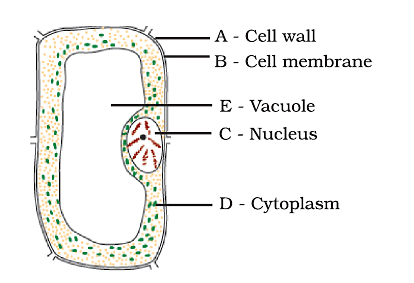
Q.31. Draw a labeled diagram of female reproductive organs.
Ans.
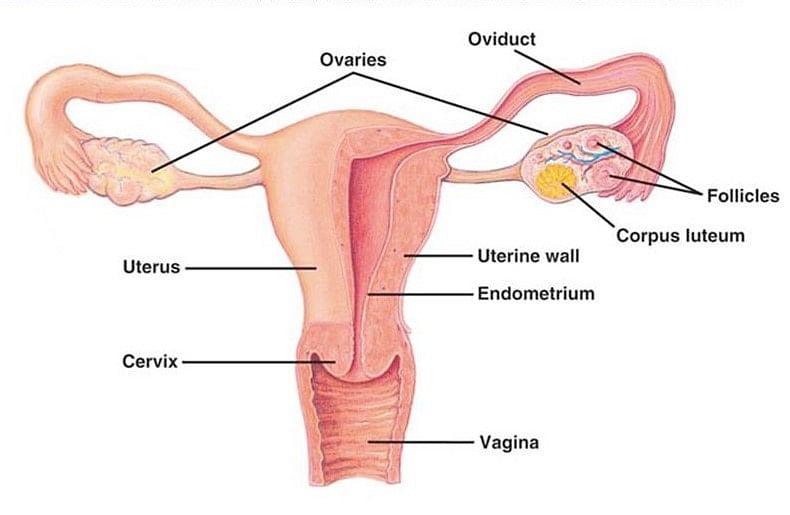 Female Reproductive Organ
Female Reproductive Organ
Q.32. Write four ways through which AIDS is transmitted.
Ans. Four ways through which AIDS is transmitted are:
(i) Sharing the syringes for injecting drugs.
(ii) Unprotected sex with an infected person.
(iii) Transfusion of blood into a healthy person from an infected person.
(iv) Through milk from an infected mother to Infant.
Q.33. Two friends are trying to push a heavy load, as shown in fig. Suggest a way which will make this task easier for them.
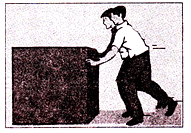
Ans. The friends can put rollers below the heavy load. Since the rolling friction is smaller than the sliding friction, therefore, putting rollers below the heavy load will make this task easier for them.
Q.34. Write down the names of parts of the eye in the blank spaces shown in fig. below. 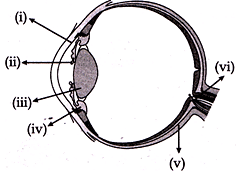 Ans.
Ans.  Q.35. Write a short note about planets of the solar system.
Q.35. Write a short note about planets of the solar system.
Ans.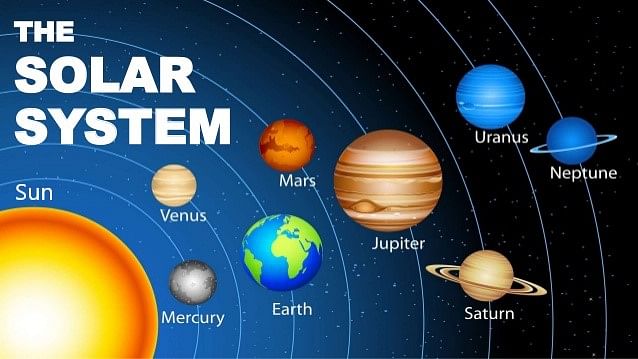
There are eight planets in our solar system:
- Mercury (Budh): It is nearest to the Sun. It is the smallest planet of our solar system. It is very difficult to visualize because it is near to the Sun. It has no satellite.
- Venus (Shukra): It is nearest to the Earth. It is the brightest planet. It is also called as morning and evening star due to its appearance. It also has no moon or satellite. It rotates from East to West.
- Earth (Prithvi): The earth is the only planet where life exists. It has special environmental conditions, right distance from the Sun, so has right temperature,
presence of water and blanket of ozone that makes life possible here. - Mars (Mangal): It is the first planet outside the orbit of the Earth. It appears reddish, so is called red planet. It has two small natural satellites.
- Jupiter (Brihaspati): It is the largest planet. It rotates very rapidly on its axis. It has large number of satellites. It also has faint rings and large moons.
- Saturn (Shani): Saturn is yellowish in colour. It has beautiful rings. It has large number of satellites. It is least dense, density is less than water.
- Uranus and Neptune: They are outermost planets of our solar system. Uranus rotates East to West and has high rotation speed.
Q.36. It is said, "CO2 Contributes to global warming". Explain.
Ans.
- Plants utilise CO2 from the atmosphere for photosynthesis, thereby decreasing the amount of CO2 in the air. Deforestation leads to an increase in the amount of CO2 in the air because the number of trees which consume CO2 is reduced.

- Human activities thus contribute to the accumulation of CO2 in the atmosphere. CO2 traps heat and it does' not allow it to escape into space. As a result, the average temperature of the atmosphere is gradually increasing. This is called global warming. Thus, increased CO2 contributes to global warming.
Q.37. Explain the use of Bacteria, Fungi and Algae.
Ans.
Uses of Bacteria:
- They are used to increase soil fertility by fixing nitrogen.
- Some bacteria are used to produce antibiotics.
- Lactobacillus bacterium converts milk into curd.
- Some bacteria help in many functions of our body.
Uses of Fungi:
- Yeasts are used to prepare alcohol and vinegar by fermentation.
 Fermentation
Fermentation - Mushrooms are eaten as food.
- Penicillin is an antibiotic formed by a fungus called Penicillium.
Uses of Algae:
- Algae are used to make jellies.
- Chlorella is used to obtain proteins.
- Silica from diatoms are used in toothpastes.
|
90 videos|273 docs|44 tests
|
FAQs on Class 8 Science: Sample Question Paper - 1 - Science Class 8
| 1. What is the importance of sample question papers for class 8 science exams? |  |
| 2. How can students use sample question papers effectively for class 8 science exams? |  |
| 3. What are the important topics that students should focus on while preparing for class 8 science exams? |  |
| 4. How can students score good marks in class 8 science exams? |  |
| 5. What are the common mistakes that students should avoid during class 8 science exams? |  |

